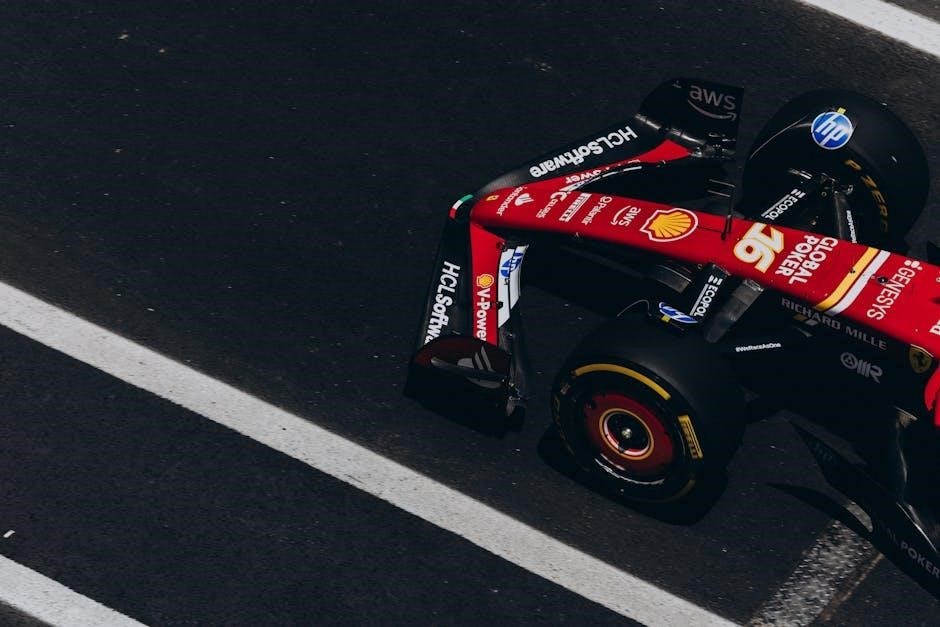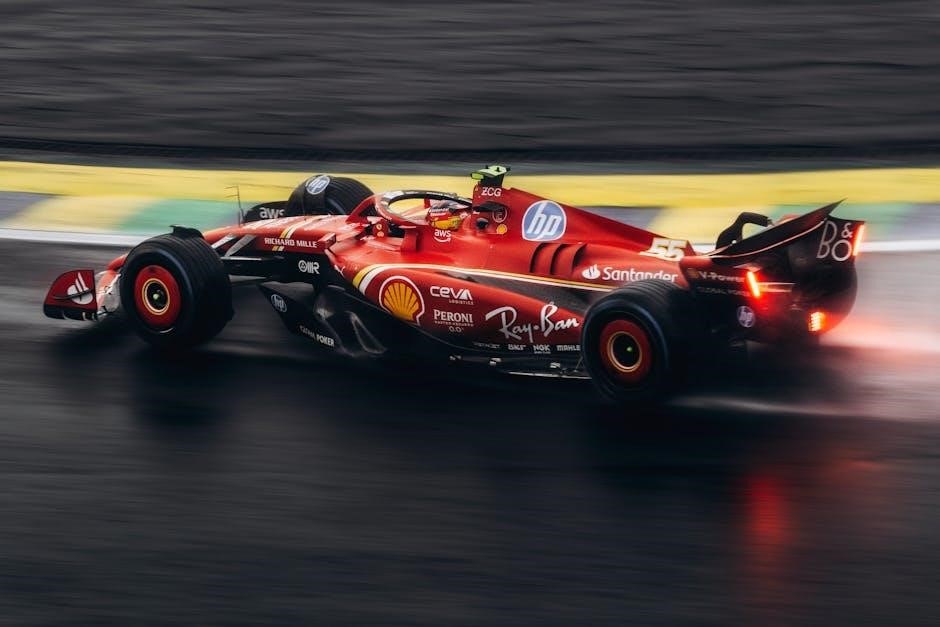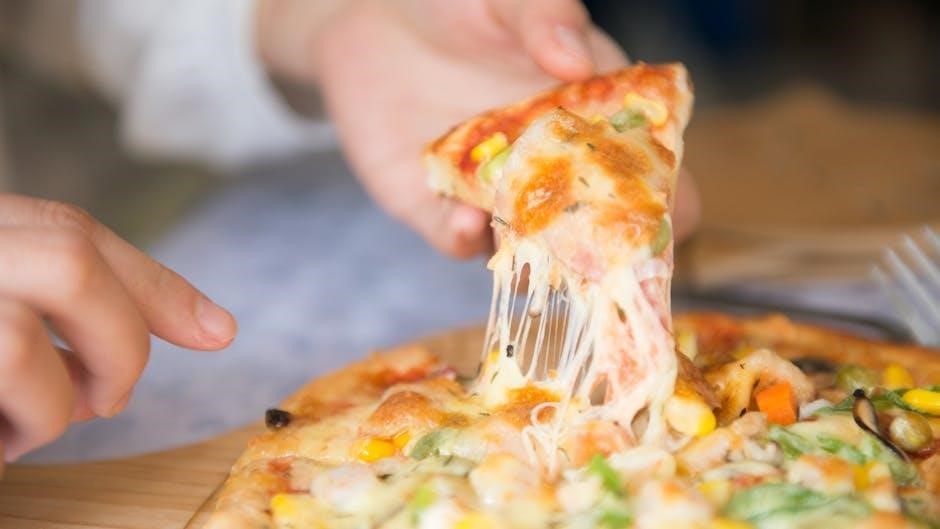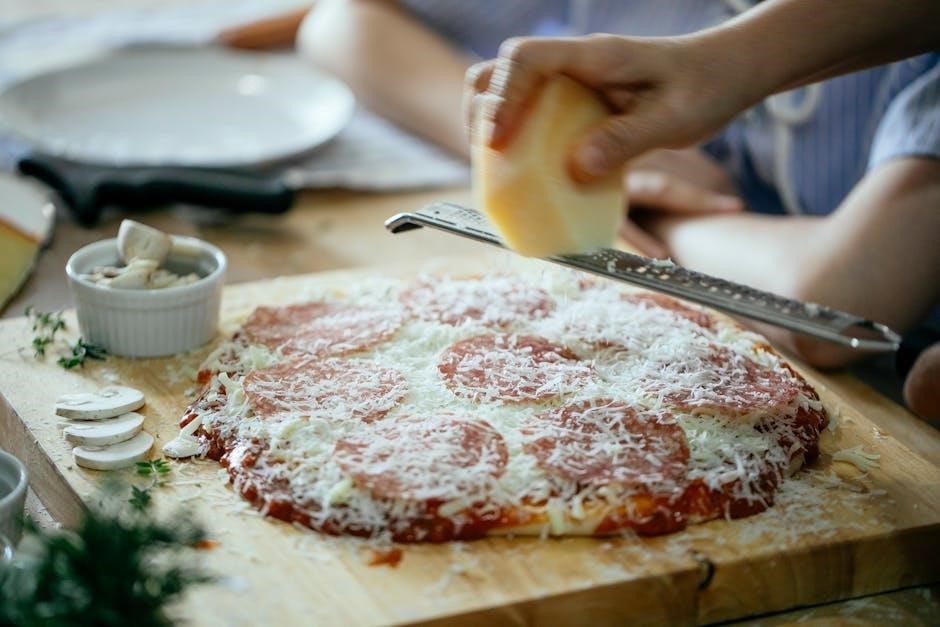The Munchkin Bottle Sterilizer is a popular, efficient solution for sterilizing baby bottles and accessories using steam. It ensures cleanliness and safety for baby feeding essentials.
1.1 Overview of the Munchkin Bottle Sterilizer
The Munchkin Bottle Sterilizer is a convenient and efficient appliance designed to sterilize baby bottles, nipples, and feeding accessories using steam. It offers a large capacity, holding up to 9 standard or 6 wide bottles, and operates quickly, completing a cycle in just 6 minutes. The sterilizer features a compact design, easy-loading rack, and safety locks to ensure secure operation. It is an essential tool for maintaining hygiene and safety for baby feeding essentials, making it a practical choice for parents seeking a reliable sterilization solution.
1.2 Importance of Sterilizing Baby Bottles
Sterilizing baby bottles is crucial for ensuring the health and safety of infants. Bottles can harbor harmful bacteria and germs, which can lead to infections and illness in young children. Regular sterilization eliminates up to 99.9% of bacteria, creating a safe environment for feeding. This is especially vital for newborns and babies with weakened immune systems. Using a sterilizer like the Munchkin model provides a quick and effective method to maintain cleanliness and protect your baby from potential health risks.
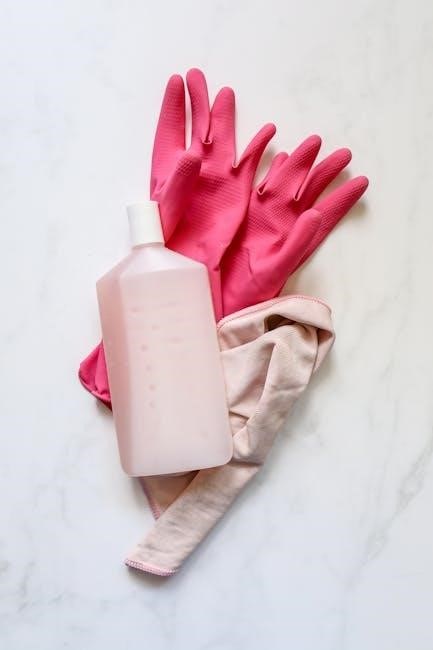
Key Features of the Munchkin Bottle Sterilizer
The Munchkin Bottle Sterilizer offers efficient steam sterilization, killing 99.9% of bacteria. It features a large capacity, holding up to 9 bottles, and operates quickly in minutes.
2.1 Capacity and Compatibility
The Munchkin Bottle Sterilizer offers impressive capacity, accommodating up to 9 standard or 6 wide bottles in one cycle. Its design ensures compatibility with various bottle brands and sizes, making it versatile for different feeding needs. Additionally, it can sterilize nipples, pacifiers, and other accessories, providing comprehensive coverage. This feature-rich sterilizer is ideal for families with multiple babies or those needing frequent sterilization, ensuring efficiency and convenience for daily use. Its compatibility with a wide range of products makes it a practical choice for parents seeking reliable sterilization solutions.
2.2 Safety Features
The Munchkin Bottle Sterilizer is designed with multiple safety features to ensure safe operation and protection for families. It includes locking handles to prevent accidental opening during use, and the sterilizer automatically shuts off after the cycle completes to avoid overheating. The device is built with durable materials and has a secure lid to contain steam effectively. Additionally, it is designed to keep children safe, with clear warnings to keep it out of their reach and not to use it as a toy. These features make it a reliable and secure choice for sterilizing baby essentials.
2.3Ease of Use
2.3 Ease of Use
The Munchkin Bottle Sterilizer is designed for simplicity and convenience, making it easy for parents to use. Simply add water, place the bottles and accessories inside, and press the start button. The sterilizer operates quickly, completing a cycle in just a few minutes. Its intuitive design ensures that even first-time users can navigate the process effortlessly. The large capacity allows for sterilizing multiple bottles at once, saving time and effort. This makes it a practical choice for busy families.
Step-by-Step Usage Guide
The Munchkin Bottle Sterilizer simplifies the sterilization process with clear, step-by-step instructions. Prepare the device, load bottles, and operate with ease for safe and effective sterilization.
3.1 Preparing the Sterilizer
Before using the Munchkin Bottle Sterilizer, ensure it is properly prepared. Start by washing your hands and cleaning the sterilizer with mild soap and water. Rinse thoroughly to remove any residue. Place the sterilizer on a flat, stable surface and add 7 fl. oz. of distilled water to the base to prevent mineral buildup. Ensure the area is clear of obstructions and the device is ready for loading bottles and accessories. This step ensures safe and effective sterilization.
3.2 Loading the Bottles and Accessories
To load the Munchkin Bottle Sterilizer, start by ensuring all bottles and accessories are clean and rinsed with mild soap and water. Place the bottles on the rack, facing downward to allow steam circulation. Arrange accessories like nipples and caps in designated areas, avoiding overcrowding. Close the lid securely to trap steam. Ensure the rack holds up to 9 standard or 6 wide bottles, leaving space for steam to circulate effectively. Always follow the manual’s guidelines for proper loading and arrangement.
3.3 Operating the Sterilizer
To operate the Munchkin Bottle Sterilizer, first ensure the rack is properly loaded with bottles and accessories. Add 7 fl. oz. of water to the base, preferably distilled to minimize mineral buildup. Place the rack inside, close the lid securely, and press the start button. The sterilizer will begin its 6-minute cycle, using steam to kill 99.9% of bacteria. Once complete, the unit will automatically shut off. Allow steam to dissipate before opening the lid to avoid burns. Always follow the instructions for safe and effective operation.
3.4 Post-Sterilization Steps
After the sterilization cycle completes, turn off the unit and let it cool slightly. Carefully open the lid to avoid steam burns. Remove the sterilized items using clean, dry tongs or gloves. Store them in a clean, dry place to prevent contamination. Regularly clean and descale the sterilizer to maintain performance. Ensure all parts are rinsed thoroughly before reuse. Follow the manual’s guidelines for proper storage and maintenance to keep the sterilizer effective and long-lasting. Always prioritize hygiene to ensure your baby’s safety.


Cleaning and Maintenance
Regular cleaning ensures optimal performance and hygiene. Wipe the exterior with a damp cloth and descale internally as needed to remove mineral buildup. Follow manual instructions.
4.1 Daily Cleaning Tips
For daily maintenance, wipe the sterilizer’s exterior and interior with a soft, damp cloth after each use. Remove any residue or water spots to prevent mineral buildup. Regularly rinse the rack and accessories in mild soapy water, ensuring they are clean and dry before storage. Avoid using abrasive materials or harsh chemicals, as they may damage the surfaces. Descale the unit periodically to maintain efficiency, especially in areas with hard water; Always refer to the manual for specific cleaning guidelines.
4.2 Deep Cleaning Instructions
For deep cleaning, disassemble removable parts and soak them in warm, soapy water for 15-30 minutes. Use a soft sponge to gently scrub away stubborn residue. Avoid bleach or abrasive cleaners, as they may damage surfaces. Rinse thoroughly and dry with a clean towel. For the base, mix equal parts water and white vinegar, soak for 10 minutes, then wipe clean. Regular descaling is recommended, especially in hard water areas, to prevent mineral buildup and maintain efficiency. Always refer to the manual for specific deep cleaning guidelines.
4.3 Replacing Parts
Regularly inspect and replace worn or damaged parts to maintain your Munchkin Bottle Sterilizer’s performance. Always use genuine replacement parts to ensure safety and compatibility. Turn off and unplug the sterilizer before replacing any components. Refer to the user manual for specific instructions on replacing items like seals, racks, or heating elements. Clean or replace water filters as recommended to prevent mineral buildup. Check the sterilizer’s maintenance schedule to ensure optimal functionality and longevity of the device. Replace parts promptly if damage is detected to avoid operational issues.
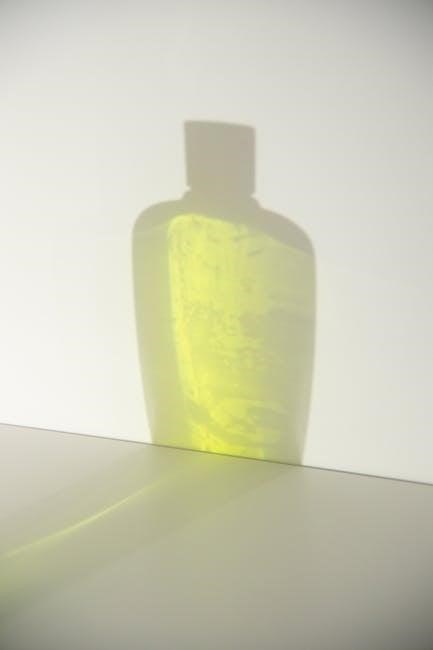
Safety Precautions
Always keep the Munchkin Bottle Sterilizer out of children’s reach. Avoid using it as a toy. Handle hot sterilized items with care after cycles. Ensure safe usage.
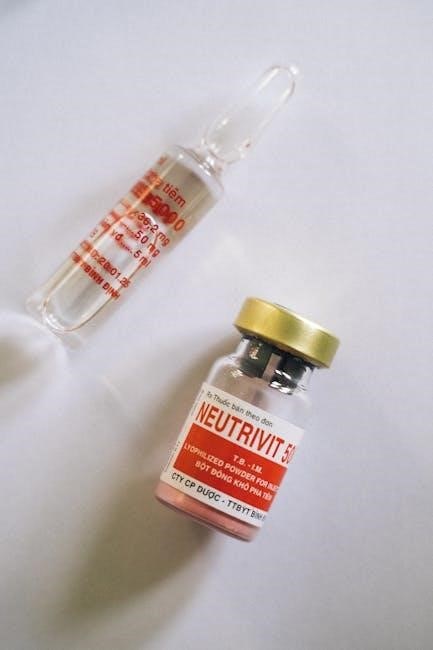
5.1 Essential Safety Tips
Always place the Munchkin Bottle Sterilizer on a stable, heat-resistant surface. Ensure the area is clear of flammable materials. Keep children away during operation. Never touch hot surfaces or sterilized items immediately after use. Use oven mitts to handle sterilized bottles. Avoid overloading the sterilizer to ensure proper steam circulation. Follow the user manual strictly for safe operation. Regularly clean the device to prevent mineral buildup. Descale the sterilizer periodically to maintain efficiency. Follow all safety guidelines to ensure optimal performance and baby safety.
5.2 Avoiding Common Mistakes
To ensure safe and effective use of the Munchkin Bottle Sterilizer, avoid common mistakes such as overloading the unit, which prevents proper steam circulation. Never use bleach or abrasive cleaners, as they can damage the sterilizer. Always add the recommended 7 fl. oz. of water to avoid insufficient steam. Do not skip descaling regularly, as mineral buildup can reduce efficiency. Avoid touching hot surfaces or items immediately after sterilization. Always follow the user manual strictly to prevent damage and ensure optimal performance. These precautions help maintain safety and effectiveness.

Troubleshooting Common Issues
Common issues include improper sterilization or the unit not turning on. Check power connections and ensure correct water levels. Clean the sterilizer regularly to prevent mineral buildup. If issues persist, refer to the manual or contact customer support for assistance. Regular maintenance can help resolve most operational problems effectively.
6.1 Resolving Operational Problems
If the sterilizer isn’t turning on, ensure it’s properly plugged in and the outlet is functional. Check for obstructions in the steam vents and ensure the lid is securely closed. If the unit stops mid-cycle, verify water levels and ensure the power button is functioning correctly. For incomplete sterilization, confirm adequate water (7 fl. oz.) is added and bottles are positioned correctly. Regularly descale the sterilizer to prevent mineral buildup, which can hinder performance. Refer to the manual for detailed troubleshooting steps.
6.2 Addressing Cleaning-Related Concerns
For cleaning issues, avoid using bleach or abrasive materials, as they can damage the sterilizer. Instead, use mild soap and water to wipe down surfaces. Regularly descale the unit to remove mineral deposits, ensuring optimal performance; Always rinse thoroughly after cleaning to prevent soap residue. If stubborn stains appear, soak the affected areas in warm soapy water before scrubbing gently; Refer to the manual for specific cleaning instructions to maintain the sterilizer’s effectiveness and longevity.
The Munchkin Sterilizer offers quick, efficient sterilization, killing 99.9% of bacteria, ensuring baby safety. Its large capacity and easy operation make it a convenient choice for parents. The Munchkin Bottle Sterilizer combines convenience and efficiency, offering a fast sterilization process that completes in just six minutes. Its sleek design and user-friendly interface make it easy to operate, fitting seamlessly into busy parenting schedules. With a large capacity that can hold up to nine standard bottles, it streamlines the sterilization process, allowing parents to sanitize multiple items quickly. This makes it an ideal choice for maintaining hygiene without compromising on time or effort. The Munchkin Bottle Sterilizer excels in effectively eliminating 99.9% of bacteria and germs using natural steam power. Its advanced design ensures even steam circulation, reaching all surfaces of bottles and accessories. The sterilizer’s locking mechanism prevents steam from escaping, maintaining optimal conditions for thorough sterilization. This reliable and consistent performance makes it a trusted choice for parents seeking to ensure their baby’s feeding items are safe and hygienic. Its effectiveness is further enhanced by automatic shut-off and cooling features. The Munchkin Bottle Sterilizer is a reliable, efficient, and safe solution for sterilizing baby bottles and accessories, ensuring peace of mind for parents. Always follow instructions for optimal results. The Munchkin Bottle Sterilizer is a practical and efficient solution for maintaining hygiene in baby feeding essentials. Its steam-based sterilization ensures effectiveness while being easy to use. With features like quick cycles and large capacity, it stands out as a reliable choice for parents. Always follow the instructions for optimal performance and safety. This sterilizer is a worthwhile investment for any family seeking convenience and peace of mind in their baby care routine. Adhering to the Munchkin Bottle Sterilizer’s instructions ensures optimal performance and longevity. Proper usage maintains safety and hygiene standards, crucial for baby health. Regular cleaning and correct water measurements prevent mineral buildup and damage; By following guidelines, parents can trust the sterilizer’s effectiveness, providing peace of mind. Consistent adherence guarantees efficient sterilization, making it a dependable tool for daily use. Always refer to the manual for specific care and operation details to maximize its benefits and ensure safe functioning.Benefits of Using the Munchkin Sterilizer
7.1 Convenience and Efficiency
7.2 Effectiveness in Sterilization
8.1 Final Thoughts
8.2 Encouragement to Follow Instructions








